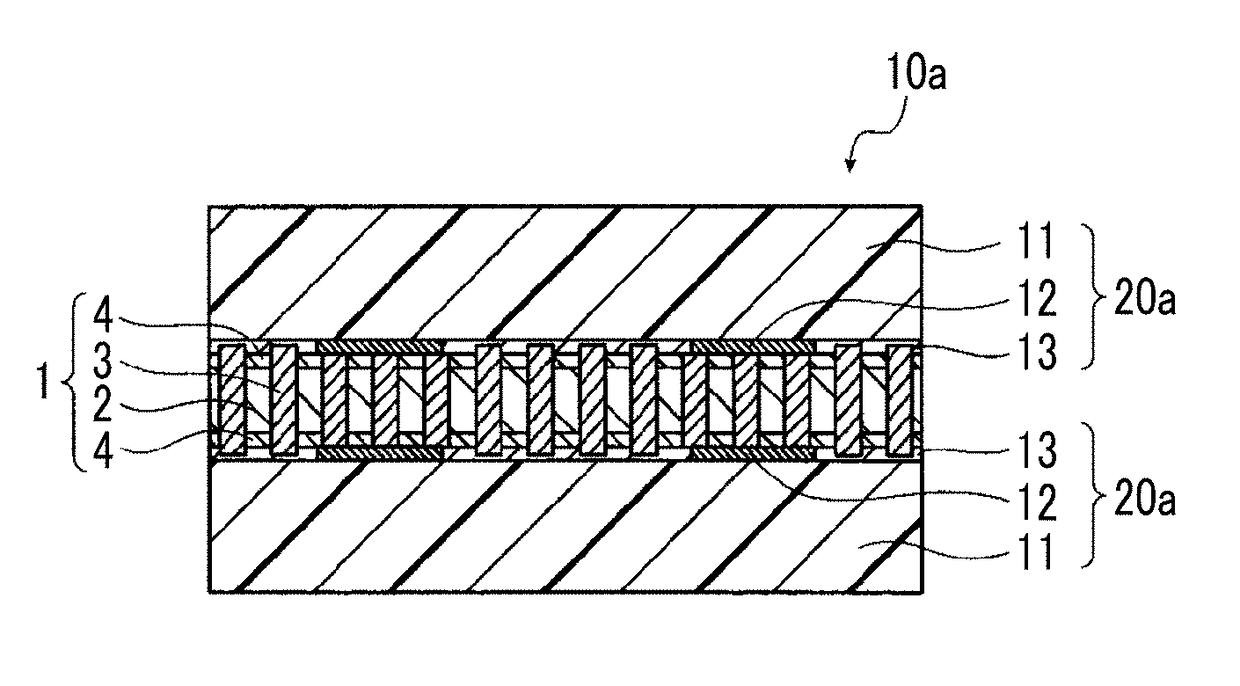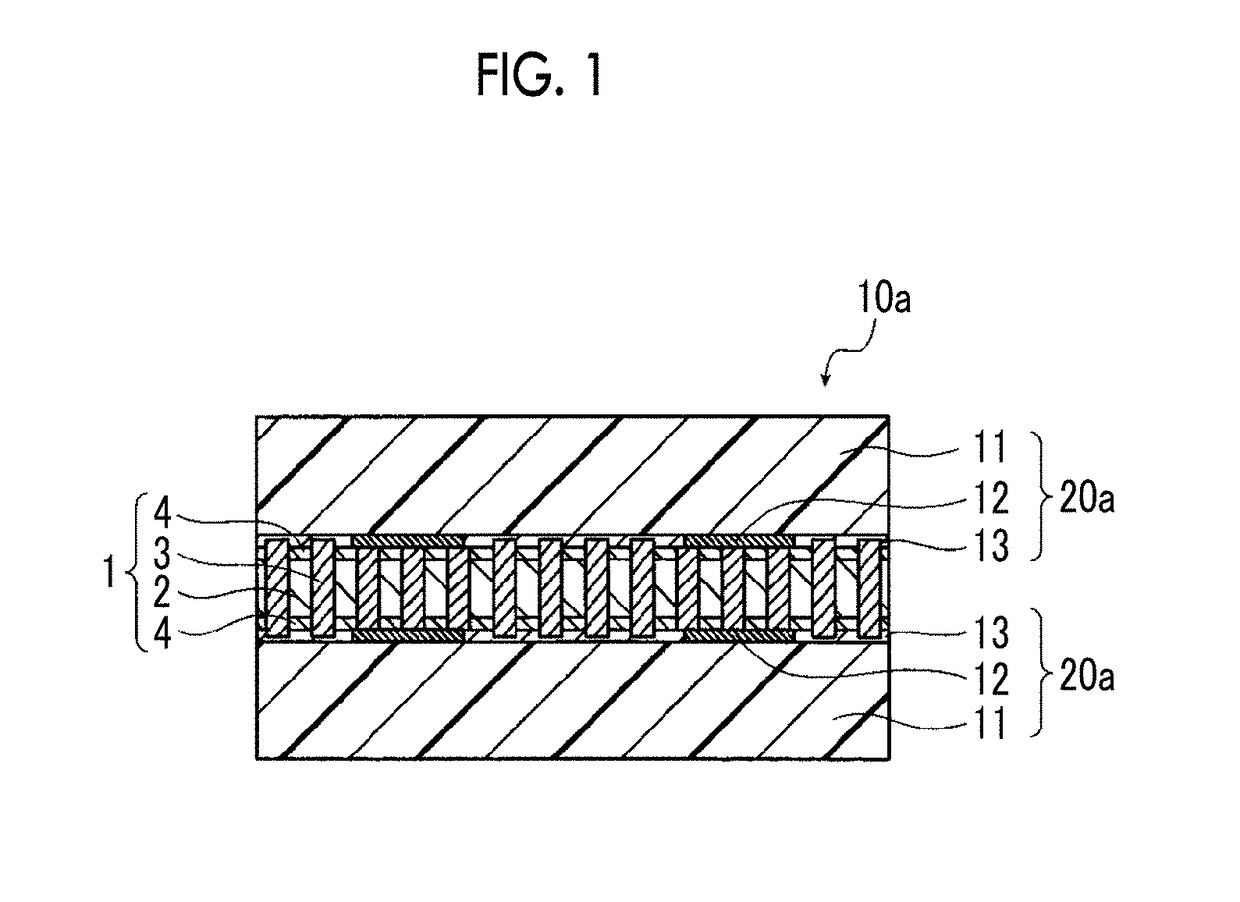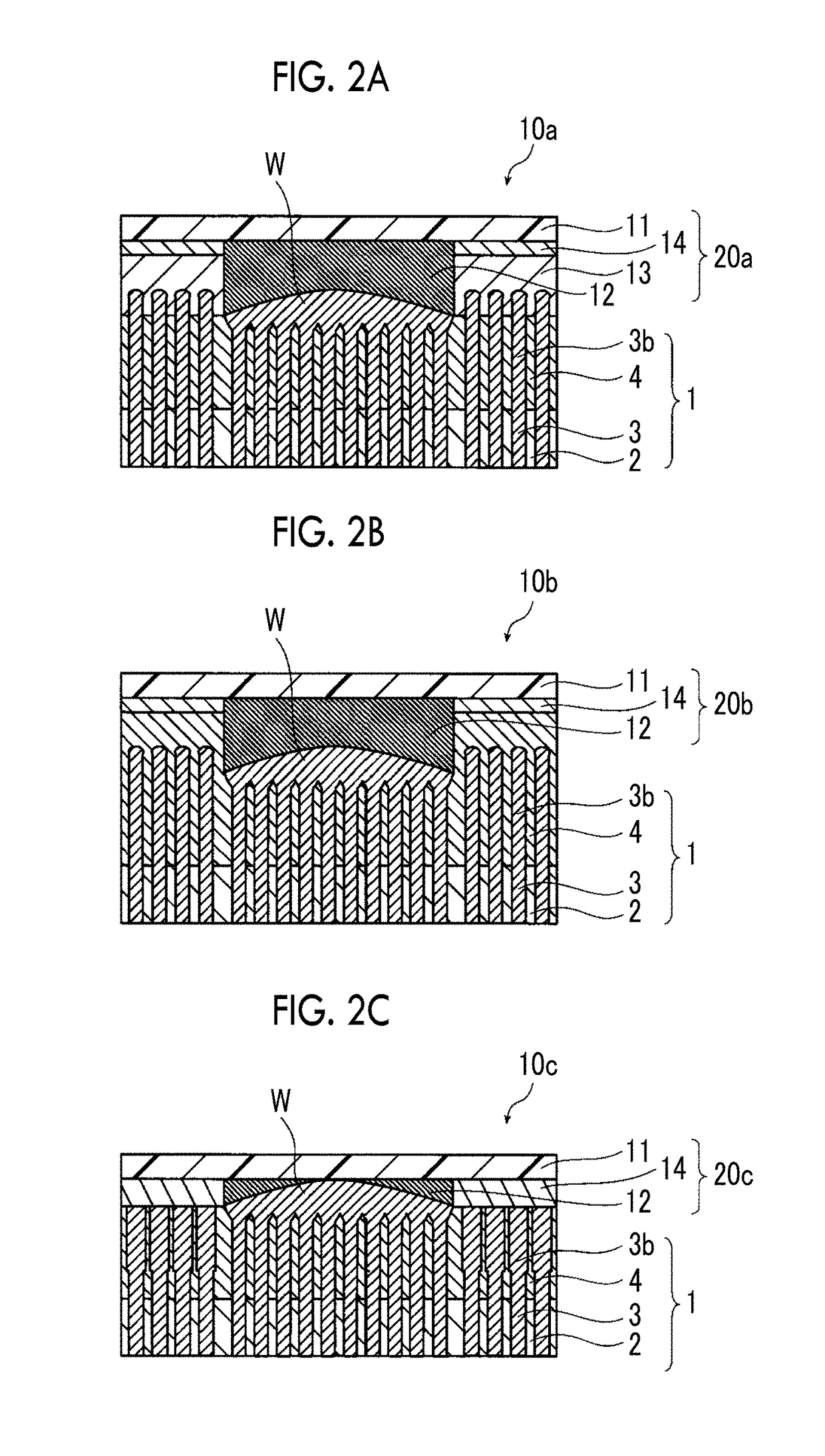Multilayer wiring substrate
- Summary
- Abstract
- Description
- Claims
- Application Information
AI Technical Summary
Benefits of technology
Problems solved by technology
Method used
Image
Examples
examples
[0222]Hereinafter, the present invention will be described specifically with reference to the following examples. However, the present invention is not limited thereto.
[0223]First, the preparation of the anisotropic conductive member and the wiring substrate used in each example will be described.
[0224][Preparation of Anisotropic Conductive Member]
[0225](1) Preparation of Aluminum Substrate
[0226]Molten metal was prepared using an aluminum alloy containing Si: 0.06% by mass, Fe: 0.30% by mass, Cu: 0.005% by mass, Mn: 0.001% by mass, Mg: 0.001% by mass, Zn: 0.001% by mass, and Ti: 0.03% by mass, and a balance consisting of Al and unavoidable impurities and a molten metal treatment and filtration were carried out. Then, an ingot having a thickness of 500 mm and a width of 1,200 mm was prepared by a direct chilling casting (DC) method.
[0227]Next, the surface of the resulted ingot was cut by a facing machine so as to have an average thickness of 10 mm and then heated at 550° C. for about...
examples 1 to 7
[0291]For Examples 1 to 7, multilayer wiring substrates having the configuration shown in FIG. 2B were repapered.
[0292]The TEG chip (B) having a step between the passivation layer and the Cu pad surface was used as a wiring substrate. The step between the passivation layer and the Cu pad surface was 50 nm.
[0293]The TEG chop (B) and the anisotropic conductive member were laminated in this order and bonded using a room temperature bonding apparatus (WP-100, manufactured by PMT Corporation) under the conditions shown in Table 1 and the condition of retaining for 5 minutes to prepare a sample of a multilayer wiring substrate.
[0294]When the bonding portion of each prepared multilayer wiring substrate was cut with FIB in a thickness direction and the cross section thereof was observed by capturing a surface image (magnification: 50,000 times) of the cross-section with FE-SEM, adjacent conductive paths of the conductive paths coming into contact with the electrode came into contact with ea...
example 8
[0295]For Example 8, a multilayer wiring substrate having a configuration shown in FIG. 2B was prepared.
[0296]That is, the multilayer wiring substrate was prepared in the same manner as in Example 5 except that the step between the passivation layer and the Cu pad surface of the TEG chip (B) was set to 150 nm.
[0297]When the bonding portion of the prepared multilayer wiring substrate was cut with FIB in a thickness direction and the cross section thereof was observed by capturing a surface image (magnification: 50,000 times) of the cross-section with FE-SEM, adjacent conductive paths of the conductive paths coming into contact with the electrode came into contact with each other and the conductive paths not coming into contact with the electrode were embedded in the pressure sensitive adhesive layer not to come into contact with other conductive paths.
PUM
 Login to View More
Login to View More Abstract
Description
Claims
Application Information
 Login to View More
Login to View More - R&D
- Intellectual Property
- Life Sciences
- Materials
- Tech Scout
- Unparalleled Data Quality
- Higher Quality Content
- 60% Fewer Hallucinations
Browse by: Latest US Patents, China's latest patents, Technical Efficacy Thesaurus, Application Domain, Technology Topic, Popular Technical Reports.
© 2025 PatSnap. All rights reserved.Legal|Privacy policy|Modern Slavery Act Transparency Statement|Sitemap|About US| Contact US: help@patsnap.com



